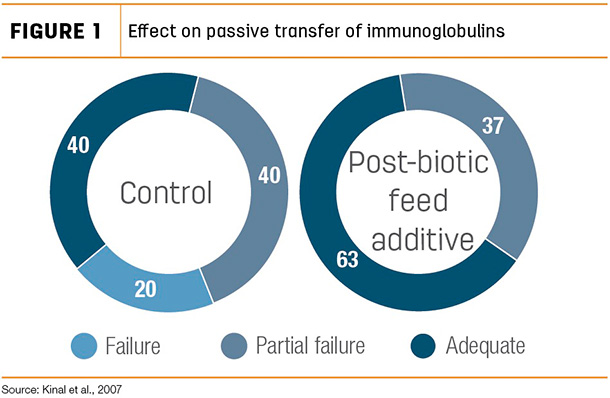Chilly mornings and brisk weather mean one thing. Winter is coming. The struggles that come with winter include increased feed inputs and gearing up for calving season. To prepare for colder months and upcoming calving, you should start planning, make sure cows are in adequate body condition and provide proper nutrition. All three will play a critical role in how successful your calving season, and ultimately, your profitability will be.
It’s never too early to get cows ready for calving
Planning ahead and being prepared for the approaching winter and upcoming calving season is one of the simplest and most effective things that you can do to reduce future headaches and improve your odds of success come calving.
Trying to find a solution after calving season has already arrived is way more difficult than preventing any problems that could arise in the first place. Make sure all aspects of winter preparation are in line. This includes things such as shelter from the elements, bedding, water (not frozen), feed and supplements, ability to move cows to where they can be assisted if necessary, adequate and properly working fences and gates, veterinary supplies for calving difficulties and animal health products (colostrum supplements, electrolytes, antibiotics, etc.).
You don’t want to get into a situation where you need something that you don’t have during a blizzard, a weekend or a holiday when you don’t have access to it. Being prepared and providing a comfortable environment for cows, calves and yourself to work in goes a long way toward both animal health as well as peace of mind.
Boost carrying condition for cows to maintain themselves and the fetus
When calves are weaned in the fall, often those cows are at a lower body condition score as a result of nursing all summer. When those cows begin to calve a few months later, if they’re in poor body condition, they can lack the physical strength they need to ensure an easy calving and to get a live calf on the ground promptly. When cows are in proper body condition, calving is generally easier.
Cows that experience calving difficulties or an extended delivery not only pose a greater risk on the health of the cow and calf, but also generally take longer to return to estrus and get rebred. Therefore, it’s important cows enter calving season at an optimal body condition score (BCS) of a 5.5 to 6.0 so they’re better able to withstand the rigors of calving at a time where Mother Nature may not be especially forgiving.
Immediately after calving, cows will also begin nursing, which is an additional energy draw on the cow that can sometimes lead to a loss of body condition. Obviously, cows that lose too much condition may experience a longer return to estrus, thereby resulting in late calvings the following year – or worse yet – open cows come fall. Consequently, it’s important to not start in a deficit when it comes to body condition, where you’re trying to put on condition between calving and rebreeding.
Provide cows proper nutrition before calving to ensure adequate calf immunity
Many challenges arise when calving, with scours being a major contributor. Calf scours are the most common cause of disease and death in calves during the pre-weaning period and may often cause more financial losses to cow-calf producers than any other health problem in their herds. Various enteric pathogens are responsible for the disease, including viruses, bacteria and protozoa.
According to the University of Minnesota, 95% of infectious calf scours is initially caused by rotavirus, coronavirus or cryptosporidium. However, since these three are nonbacterial in nature, antibiotics will not treat the initial cause of the disease. (But traditional antibiotic therapy can be beneficial when dealing with secondary bacterial infections that may arise later.) As a result, a robust and properly functioning immune system is the most effective strategy in combating calf scours in the first place.
As you get closer to calving, it’s critical that you get cows on an adequate plane of nutrition. Many producers fail to realize that one of the most effective things they can do to support newborn calf health and reduce the incidence of calf scours is to ensure proper nutrition in the dam during the last six weeks of pregnancy. This is when colostrogenesis (production of colostrum) begins to take place in the dam.
Cows in good condition whose nutrient needs are being met are better able to produce enough high-quality colostrum. Improved colostrum quality means improved immunity in calves.

Calves that do not receive adequate, high-quality colostrum shortly after birth typically have lower serum immunoglobulin levels. This is often referred to as “failure of passive transfer,” where adequate transfer of antibodies did not occur from the cow to her calf. When this occurs, calves are much more susceptible to disease challenges, including scours.
In fact, research from Wittum and Perino of the U.S. Meat Animal Research Center, 1995, suggests that calves with the lowest serum immunoglobulin levels were 5.4 times more likely to die before weaning and 3.2 times more likely to suffer from disease. This research points to the importance of reducing the incidence of failure of passive transfer.
Colostrum contains immunoglobulins produced by the cow’s immune system that protect the calf against different diseases. These immunoglobulins are most effectively absorbed immediately after birth, with intestinal absorption diminishing to nothing by 24 to 36 hours, so make sure calves are up and nursing as soon as possible.
Data show that when you provide an immune support post-biotic feed additive daily beginning six weeks prior to calving, those cows are able to produce higher-quality colostrum, thereby improving passive immunity in the calves and reducing failure of passive transfer.
Incorporating an immune support post-biotic feed additive can also help support robust digestive health by balancing rumen microbiota and optimizing the rumen environment. Optimum rumen function translates into better-performing cows and calves that are more capable of reaching their genetic potential.
A post-biotic feed additive also helps improve forage digestibility when calves are nursing, which means more nutrients (energy, protein, minerals, etc.) are available for both milk production and body condition. Improved milk production translates into heavier weaning weights, while improved body condition not only affects rebreeding but also means less feed is required to put on much-needed pounds after weaning.
As colder temperatures creep closer, be sure your cow herd is ready for winter and calving. By planning to make sure cows are in adequate body condition and providing proper nutrition (such as a post-biotic feed additive), you’ll be taking the right steps to ensure this upcoming calving season goes smoothly, with healthier calves, improved rebreeding and fewer headaches.








